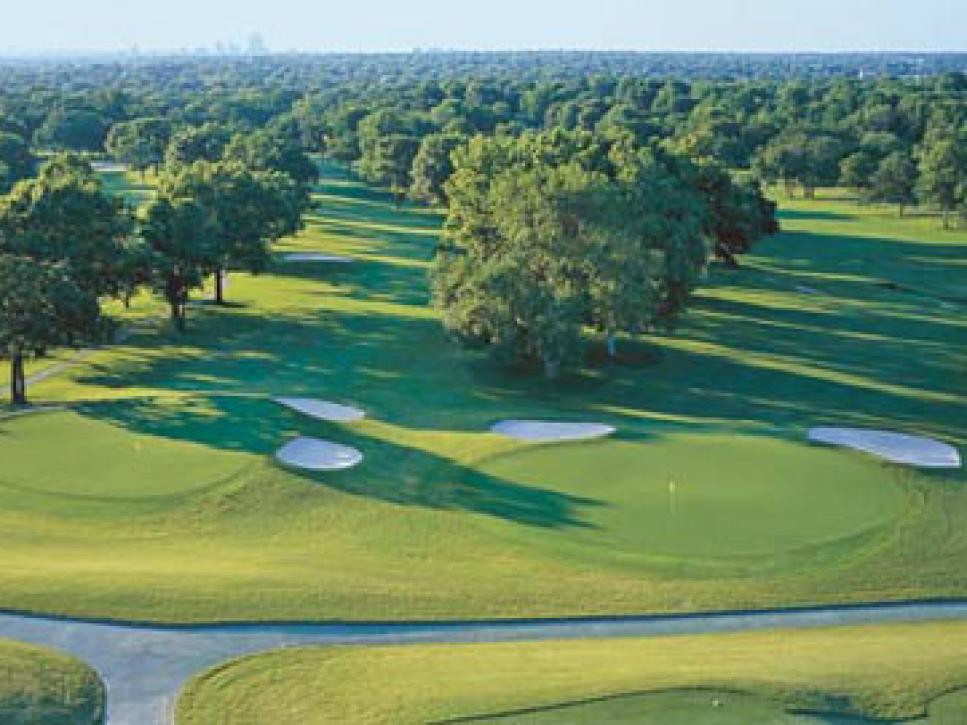Learning from the 2001 Open

Southern Hills' ninth (left) and 18th greens underwent changes; who knew basketballs could help?
The calamities that occurred on the final green of Southern Hills at the 2001 U.S. Open--eventual winner Retief Goosen three-putting from 12 feet to fall into a tie with Mark Brooks, who had three-putted from 50 feet, and a despondent Stewart Cink failing to make the playoff by three-putting from 12 feet for a double bogey--were not caused by an unfair pin position or a super-fast putting surface. It was just the opposite. The hole was in a flat spot, but the green was putting noticeably slower than all but one other on the course.
Early in the tournament, the 18th and ninth greens--both terraced with long slopes, characteristic of Southern Hills designer Perry Maxwell--proved too steep for the pace desired that week, 11 feet on a Stimpmeter. Shots to those greens rolled back downhill off each green.
"The ninth hole was the players' fault," says John Szklinski, superintendent at Southern Hills in 2001. "They were hitting wedges to that green, with lots of spin. They're the best players in the world. They knew how to take spin off a shot. But the 18th was our fault. Players were hitting 3- and 4-irons well to the center of the green, only to see it roll back off and end up 30 yards down the fairway. We had it cut too short for the slope of that green. It was like the first two-thirds of the green was a false front."
So the height of cut was raised on both the ninth and 18th, but remained lower on the other 16 greens. Cink said afterward the two greens putted like fringe. "I wish they'd left it the way it was. When you've got a green that's different than all the rest, there's something funny."
In 2004, Szklinski, consulting architect Keith Foster and a crew reconstructed both greens to preserve the Maxwell look but avoid a repeat of 2001 at this year's PGA.
The back of the two-level ninth green was lowered four inches; the front edge was raised four inches and the transition contour between the two levels was throttled back by reducing the slope by 2 percent.
The entire 18th green was shifted left about eight feet, its upper-back level lowered by three to four inches and its lower-front section lifted five to six inches. The fairway leading to the green was regraded back 80 feet to eliminate a steep incline, and the floor of the bunker at the left-front was raised 2 1/2 feet to replicate its previous depth.
Once the contouring of the sand base was completed, but before seeding, someone suggested rolling balls across the 18th green to make sure nothing would roll off the front edge. Because a golf ball won't roll in firm sand, basketballs were used, rolled from various angles toward different spots on the lower section. When the first few rolled off the front edge, workers with hand rakes added an extra one-eighth inch to the front section. More tries led to more one-eighth-inch layers of extra fill. Szklinski says they spent nearly a day perfecting the slopes so that balls wouldn't gather speed once they rolled down onto the lower section.
But a basketball is not a golf ball, he says, and a seedbed of sand is not bent grass mowed at one-tenth of an inch, stimping at 12 feet. No one will know if their efforts succeeded until those greens are tested under tournament conditions at this year's PGA.